I have always thought the FE is a very well made camera. Simple, friendly, inviting and dependable. Despite a lapse of twenty years - that belief never changes. But those days, the FE was more expensive than the Nikon FM, its mechanical version and I couldn't afford the difference and eventually settled with the FM instead. I remembered I have sold that when the FE2 was introduced during the early eighties. Strange to made a such a remark - personally, I felt even the FE2 lacks that kind of feel an older FE presents. May be it is very much due to the choice of material used and its chrome finishing which project a kind of elegant that was hard to duplicate. The Nikon FE uses the aperture priority system of exposure automation first developed for the Nikkormat EL in 1972 and later refined in the Nikon EL2.
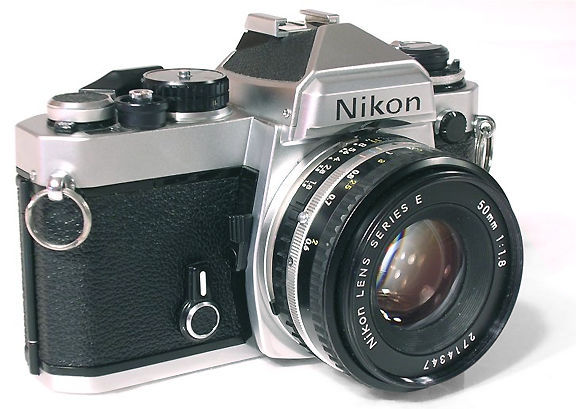 |
|
That preset exposure setting was a decision by a photographer's behind a combination of aperture value, shutter speed setting aided by individual knowledge of mastering various functions provided by a camera and film in use. You have selected those combination for a particular exposure to express how you feel about the something that has made you feel 'good'. A mechanical camera does provide for a user with good photographic fundamental (Whatever the reasons) because you have to adjust everything on your own with the guidance of a suggested metering - along the way, you can picked up a lot of good knowledge. An automatic body adds a layer of responsiveness, as long as you understand the basic, an automatic exposure camera is just a tool to help you react quicker in a image capture process, that is all. As compared with the Nikon FM, numbers and volume of the Nikon FE available in the used market is not as high. Why the FE was so treasured (Or rugged enough to withstand the test of time) by owners ? Personally, I felt beside the fact that it can provide everything the FM can perform (To certain extend, shutter speed accuracy is higher) and without the hassle of adjusting various manual control critical for exposure accuracy. They are a few handy but very considering features that can keep a photographers busy in assignment make less mistakes. Best of all, should you feel you have all the time in the world to take a picture, you can revert back to full manual control as with a FM. Why not ? However, the real beauty of aperture-priority automation, as employed in the FE, is that the camera can be used with almost any optical device, including a mirror lens, microscope, telescope, or bellows unit, and still deliver automatic exposures.
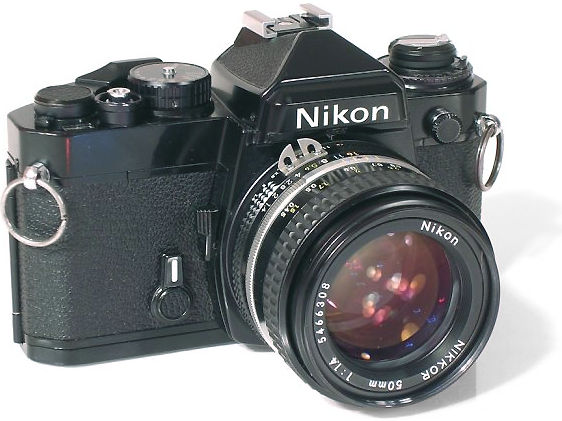 |
|
In many ways, photography was much easier, with some fun as well. For its automatic aperture-priority exposure control, two metering cells (as opposed to GPD used in the FM, Silicon photo diodes were the choice) are positioned, one on each side of the eyepiece, to give a "center-weighted" meter reading, a system used and introduced by Nikon more than 10 years ago in the FTN Photomic finder for the Nikon F. And, of course, there is a manual override for match-needle operation as well. Its auto exposures adopted the aperture priority automation for photographers who prefers and think creative depth of field is of more important than shutter speed preferred automation. As most entry SLR users started from learning depth of field control, portrait photography seems to the logical ways to do some experimentation (Usually, starts with your favorite gals, of coz').This is not surprising, other than the pros who used it as a back up bodies for their mechanical F, F2 or the electronic F3 bodies where situations demands a more compact and responsive bodies for greater portability, mobility and functionality, the slightly high sync speed of 1/125 sec also present a good reason for the back up to the professional F bodies those days, as most have a relatively slow sync speed (1/60 sec for the Nikon F, 1/80 sec for the Nikon F2) when working with flash.
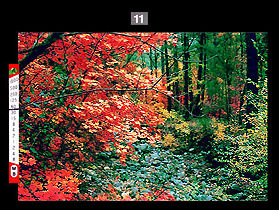 |
The Nikon FE uses a popular match needle exposure display system inside the finder. It is easy to use and simple to operate but may be a little difficult to read in a dimly lit environment. Personally, I find it very friendly to use, particularly when operating in the auto mode where the match needle is superior and less offending to LEDs readouts. |
The FE has a unique memory lock in the automatic mode. Further, there is an exposure compensation selector to vary metered exposure over a range from EV-2 to EV+2. Other features include reduced shock and noise when triggering, a very smooth 135° winding lever and a built-in ready light for the FE's companion SB-10 Speedlight unit or equivalents (In fact, it takes all Nikon AF flashes). With the SB-10 (or equivalents) mounted, the auto mode switches on for flash photography with the shutter speed set at 1/90 sec. automatically. The double exposure lever has moved near to the film advance lever as compared with the FM's slightly off position, this permits the use of single hand operation even with a motor drive. But the best of all, the FE accepts almost all Nikkor lenses and the vast majority of the Nikon accessory lineup (The FM and FE are the only two mid compact Nikon (The Pro F series models and the slightly bulkier Nikkormat as well) that has a adjustable meter coupling lever to take past and present (Non-AI, AI, AI-Modified, AI-S, Series E and AF) Nikkor lenses (Except some older or specialize lenses because these compact bodies don't provide with a Mirror Lock Up features).
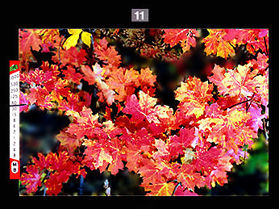 |
I am living in a tropical belt and hardly have any chance to see how seasons change in temperate countries. My friend Chuck who stays in Arizona has sent me some of these beautiful images from around his house to ensure me of how it looks in a vibrant color filled Autumn in the U.S. I enjoy that very much and has always been thankful for such a wonderful gift from nature. |
Based on a recent official
report released by UN environmental survey, it is indeed highly surprisingly to note
US and China are the two BIGGEST
culprits who top the list
responsible pumping the FEW MILLION tons of waste gases into the atmosphere annually
! Errr.. looks like our greens in the tropic here carries the burden of supplying
many on the globe supply of Oxygen and to cool the planet heated by 'some who often
cries wolves.. ', especially during late autumn and winter time where I don't think
these beautiful scenes has anything to do with production of Oxygen... just remember,
the next time you do a inhale - be grateful, a big portion of it could be - made
in Malaysia.. hehe...
It is very easy to work with
other Nikon as most shared same exposure reading configurations in a 60/40 metering
pattern. This presents a very attractive reason as it eliminate the needs to readjust
exposure reading with a manual body for critically action based assignments. Moreover,
a slight advantage it presents here over the earlier FM (Not the FM2 and later models),
the FE accepts 3 different types (2 groups, newer screens need compensation) of focusing screen for maximum viewing and
focusing convenience over a wide range of applications.
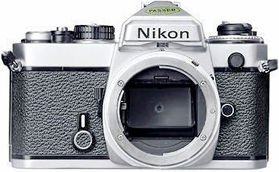 |
As for the previous Nikkormat or Nikon EL or FT series users, the upgrade in the more compact FE seems attractive enough, as they lacks or don't have a high performance motor drive. The FE shared the 3.5 fps MD-11 and it works well even with the current MD-12 motor drive. With a motor drive, it opens up other potentials like remote unmanned photography. Further, the FE has its dedicated databack in MF-12 (Warning: The FE cannot use the current MF-16) |
Camera
Operation and Control (9 parts)
A little
extra technical
notes (7 parts) Part: 1
| 2 | 3
| 4 | 5
| 6 | 7
Battery(ies) Issues
Update: Nikon FE green Lizard Skinned Model
The Main Reference Map - HTML | PDF
(172k)
Specification - HTML | PDF
(37k)
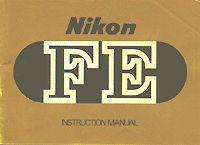 |
| Back to Nikon FE Main Index Page | |
W A R N I N G: The New G-SERIES Nikkor lenses have no aperture ring on the lens, they CANNOT ADJUST APERTURES with any of these manual focus Nikon FE series SLR camera models; please ignore some portion of the content contained herein this site where it relates.
| Nikon FE series | Nikon FA |
| Back | to Pictorial History of Nikon Rangefinder/SLR/Digital cameras
| Message
Board
| for your favourite Nikon FE Series
SLR camera(s)
| Message Board | for your Nikon Optics
in a shared environment
| Message Board | Specifically for Dispose or Looking for Nikon / Nikkor
Photographic Equipment
|
Back | to Pictorial
History of Nikon Rangefinder/SLR/Digital cameras
Shared
Resources: MD-11 | MD-12 | 3rd Party Power Winder Only for FM2(n)/FE2/FA
| Focusing Screens | Titanium Shutter | Flash Units -
| SB-15 | SB-10 | SB-16B & Other Options | Databack | Nikkor lens mount (related
info)
Others:- Nikon AF-TTL Speedlights | SB-20 (1986) | SB-22 (1987) | SB-23 | SB-24 (1988) | SB-25 (1991/2) | SB-26 (1994) | SB-27(1997) | SB-28 (1997) | Nikon SB-29(s) (2000) | Nikon SB-30 (2003) | Nikon SB-600 (2004) | Nikon SB-800 (2003) Nikon AF-TTL Speedlight DX-Series: Nikon SB-28DX (1999) | SB-50DX (2001) | SB-80DX (2002)
Nikon
BC-flash Series |
Original
Nikon Speedlight
SB-2
| SB-3 | SB-4
| SB-5
| SB-6 | SB-7E
| SB-8E
| SB-9 | SB-E
| SB-10
SB-11
| SB-12 | SB-14 | SB-140 UV-IR| SB-15 | SB16A | SB-17 | SB-18, SB-19 | SB-21A (SB-29) Macro flash | Flash Accesories | SF-1
Pilot Lamp
| Nikon F | Nikon F2 | Nikon F3 | Nikon F4 | Nikon F5 | Nikon F6 | Nikkormat / Nikomat | Nikon FM | Nikon FE/ FA | Nikon EM/FG/FG20 | Nikon Digital SLRs | Nikon - Other models |
Nikon Auto Focus Nikkor lenses:- Main
Index Page
Nikon Manual Focus Nikkor lenses:- Fisheye-Nikkor Lenses - Circular | Full Frame |
Ultrawides Lenses - 13mm15mm18mm20mm | Wideangle Lenses - 24mm28mm35mm | Standard Lenses - 45mm 50mm 58mm | Telephoto
Lenses - 85mm105mm135mm180mm & 200mm | Super-Telephoto Lenses - 300mm 400mm 500mm 600mm 800mm 1200mm |
 Index Page |
Special
Application lenses: Micro-Nikkor Lenses - 50mm~55mm -60mm 85mm -105mm 200mm Micro-Zoom 70-180mm Perspective Control (PC) - 28mm 35mm PC-Micro 85mm Dedicated Lenses for Nikon F3AF: AF 80mm f/2.8 | AF 200mm f/3.5 EDIF Depth of Field Control (DC): 105mm 135mm Medical Nikkor: 120mm 200mm Reflex-Nikkor Lenses - 500mm 1000mm 2000mm Others: Noct Nikkor | OP-Nikkor | UV Nikkor 55mm 105mm | Focusing Units | Bellows-Nikkor 105mm 135mm Nikon Series E Lenses: 28mm35mm50mm100mm135mm | E-Series Zoom lenses: 36~72mm75~150mm70~210mm |
MF Zoom-Nikkor Lenses: 25~50mm | 28~45mm | 28~50mm | 28~85mm | 35~70mm | 36~72mm E | 35~85mm | 35~105mm | 35~135mm | 35~200mm | 43~86mm | 50~135mm | 50~300mm | 70~210mm E | 75~150mm E | 80~200mm | 85~250mm | 100~300mm | 180~600mm | 200~400mm | 200~600mm | 360~1200mm | 1200~1700mm
Tele-Converters: TC-1 | TC-2 | TC-200 | TC-201 | TC-300 | TC-301 | TC-14 | TC-14A | TC-14B | TC-14C | TC-14E | TC-16 | TC-16A | TC-20E
Recommended links to understand more technical details
related to the Nikkor F-mount and production Serial Number:
http://rick_oleson.tripod.com/index-153.html by: my
friend, Rick Oleson
http://www.zi.ku.dk/personal/lhhansen/photo/fmount.htm by: Hansen,
Lars Holst
http://www.mir.com.my/rb/photography/hardwares/nikonfmount/lens2.htm
http://www.photosynthesis.co.nz/nikon/serialno.html
W A R N I N G: The New G-SERIES Nikkor lenses have no aperture ring on the lens, they CANNOT ADJUST APERTURES with any of these manual focus Nikon FE series SLR camera models; please ignore some portion of the content contained herein this site where it relates.
Recommended Reading Reference on Nikon cameras and Nikkor lenses
IF you like this site, help to make it better !
|
Back | Main Index Page of Nikkor Resources
|
Back | Main Index Page of Pictorial
History of Nikon SLRs
| Message Board | for your Nikkor optics ("shared" because I do wish some of you to expose to other's perspective as well. Isn't it a sad sate to see photography has to be segmented into different camps from the use of various labels)
about this photographic web site
Home - Photography in Malaysia |
A contributing effort to Michael C Liu's Classic Nikon Site.
Credit: Chuck Hester for some of his beautiful images used in this site; Ted Wengelaar®, Holland for his continuous flow of input; Lars Holst Hansen, Danish 'Hawkeye' who shares the same passion; Mr Poon from Poon photo for their input; Ms Miss Rissa (Sales Manager) & members of the Technical Service dept. of Shriro Malaysia, local distributor of Nikon cameras in Malaysia & Singapore, in providing so many useful input to make this site possible. Special thanks to Mr MC Lau, who has helped with his images of the MF-12 databack. Michael Tan, Pertama Photo (603-2926505) for lending his original Titanium Shutter Display Unit. Dave Hoyt who has prepared the introductory page and offer some images of his FE2 in this site.. Hiura Shinsaku, Nikomat ML, Japan for his contribution on all the various images; A contributing site to a long lost friend on the Net. Note: Certain content and images appeared in this site were either scanned from official marketing leaflets, brochures published by Nikon and/or contribution from surfers who claimed originality of their own work to publish in this site based on educational merits. The creator of this site will not be responsible for any discrepancies that may arise from such possible dispute except rectifying them after verification."Nikon", "Nikkormat", "Nippon Kokagu KK" & "Nikkor" are registered tradename of Nikon Corporation Inc., Japan. Made witha PowerMac.